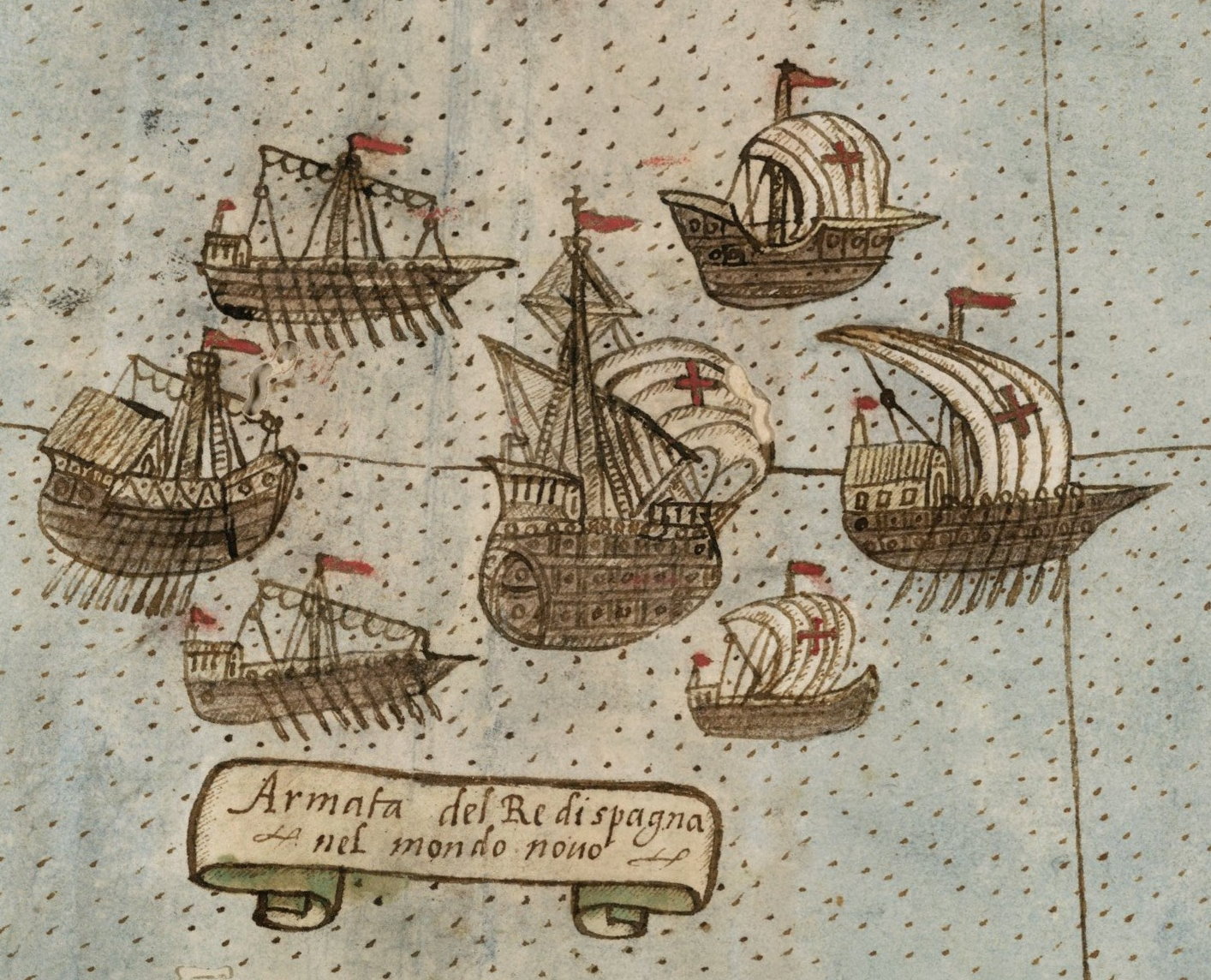Colonial-Era Spanish Ships
 Spanish Florida was connected to the outside world by wooden sailing ships, including those that initially explored its coastlines starting in 1513, and those that provided a lifeline of provisions and other equipment and supplies via regular maritime travel between St. Augustine (and, later, Pensacola and St. Marks) and more central Spanish colonial ports at Havana, Veracruz, and other locations around the Caribbean basin. The image to the right is an illustration on the larger planisphere map drawn by Urbano Monte in 1587 (the digitized original can be found here), and shows an assortment of ship types commonly used on early Spanish colonial fleets in the New World.
Spanish Florida was connected to the outside world by wooden sailing ships, including those that initially explored its coastlines starting in 1513, and those that provided a lifeline of provisions and other equipment and supplies via regular maritime travel between St. Augustine (and, later, Pensacola and St. Marks) and more central Spanish colonial ports at Havana, Veracruz, and other locations around the Caribbean basin. The image to the right is an illustration on the larger planisphere map drawn by Urbano Monte in 1587 (the digitized original can be found here), and shows an assortment of ship types commonly used on early Spanish colonial fleets in the New World.
Below is a digitized journal issue with an excellent short article that provides an overview of the various types of sailing ships used in the early Spanish colonial period and particularly in the exploration of Spanish Florida (pp. 18-29).
Smith, Roger C.
1992 Ships in the Exploration of La Florida. Gulf Coast Historical Review 8(1):18-29.
Ship types described include the larger caravelas, naos, and galeones, along with smaller bergantines, fragatas, and barcos, as well as fustas and chalupas.
One amazingly detailed visual and textual record about Spanish sailing vessels during the early-to-mid 18th century is the manuscript below, which has recently been fully digitized in high-resolution images. Not only is this an amazing source about all aspects of the ships themselves, it also includes illustrations of a comprehensive range of material culture that was normally carried on board ships during that era and earlier. Importantly, the digitized version has individual links to each page with titles that describe the illustrations shown on that page.
Navarro, Juan José [Marqués de la Victoria]
1719-1756 Diccionario demostrativo, con la configuración o anatomía de toda la architectura naval moderna donde se hallan delineados, con los nombres propios de nuestra Marina, todos los principales maderos y piezas de construcción que se emplean para formar un navío. Ms.2463, Archivo Histórico de la Armada - J.S. de Elcano, Madrid, Spain.
Also within the primary source record, the ca. 1537 manuscript volume commonly known as the Espejo de Navegantes ("Mariner's Mirror"), written by the royal cosmographer Alonso de Chaves includes his own list of ship types ranked by size from small to large, including a wide range of ships used not just in the New World but also in the Mediterranean Sea and eastern Atlantic Ocean. The digitized original manuscript can be found at the Spanish Royal Academy of History under the name Quatri partitu en cosmographia pratica i por otro no[m]bre llamado Espeio de Navegantes. The list below begins on Image 120.
Navios Mancos y Pesados
copatenes
esquifes
bateles
barcos
barcas
chalupas
tafurcas
gavarras
pataxes
pinaças
caravelas
navios
naos
urcas
galeones
carracones
carracas
Navios Subtiles, o Ligeros
zabras
bergantines
galeotas
esquiracas
fustas
galeras
galeras bastardas
galeaças
This page is still very much in development.